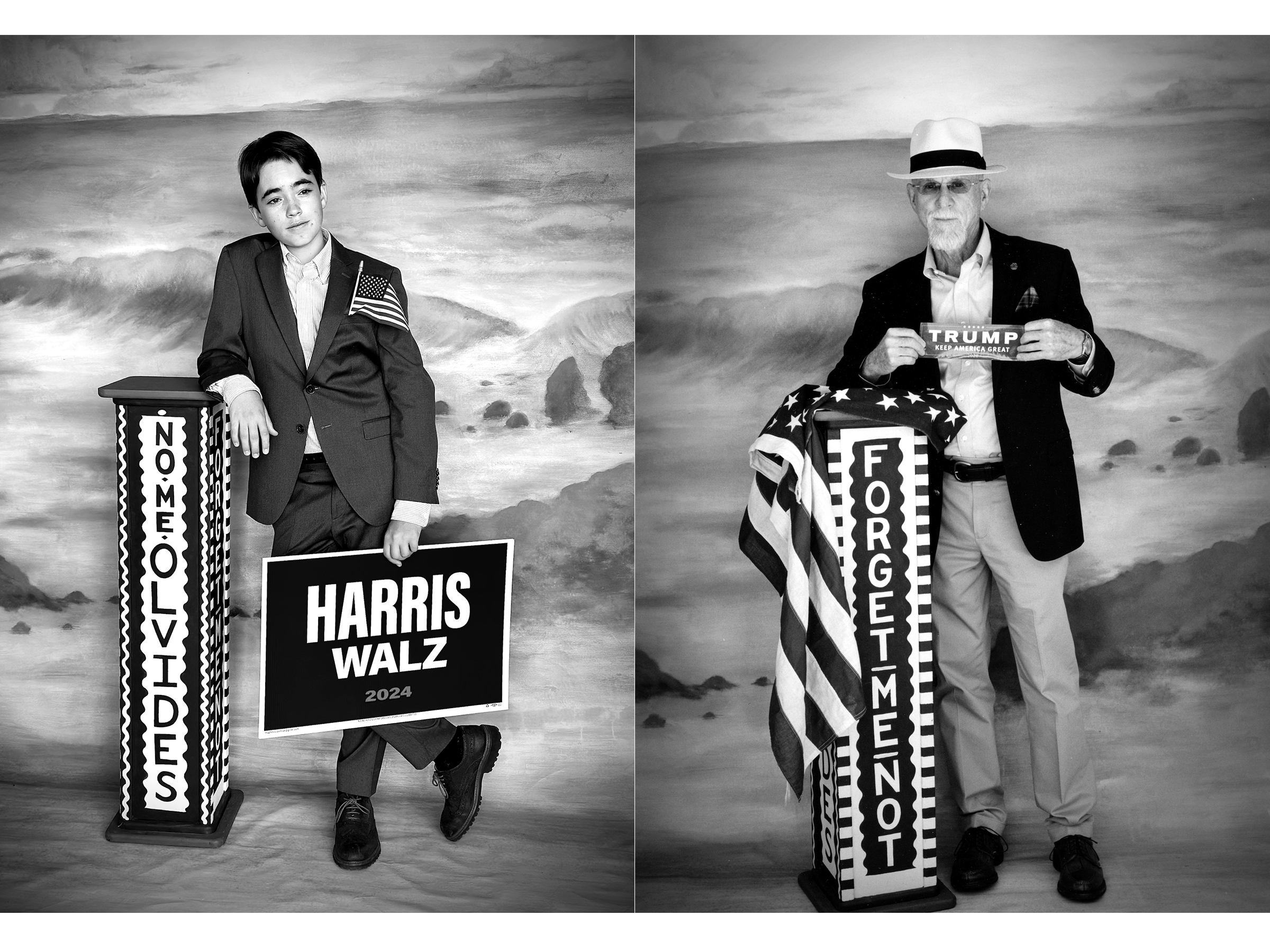
They used to call them recuerdos (meaning memories, but also souvenirs or keepsakes), the portraits captured against a painted backdrop by itinerant photographers known in Puerto Rico and elsewhere as ambulantes. In contrast to the scenic images exported en masse to promote a picturesque vision for foreign investors and tourists, these were highly personal snapshots, often taken with a specific recipient in mind.
“The photos would be sent out to the mainland as a way of saying: ‘I’m thinking of you, I miss you,’” said Norma I. Quintana, whose parents immigrated to Cleveland, Ohio, from the Puerto Rican mountain town of Lares. Her mother sent Quintana’s father one such token of remembrance from the island, one of multiple kept in family albums, and the artist posed for similar studio portraits as a child during trips back to visit relatives.
Quintana has photographed around 100 individuals in her current home of Napa Valley in the vintage style of recuerdos for her ongoing series Forget Me Not (No Me Olvides) (2006–ongoing), channeling a Puerto Rican and Latin American image-making tradition into a meditation on everyday people.
“It is my hope that viewers can see themselves in the photographs, and by doing so make the Puerto Rican experience their experience,” Quintana told me in a phone call last week.
It’s a sentiment that has stayed with me over the last few days, as Donald Trump ramped up his dehumanizing discourse against undocumented immigrants, US citizens such as Puerto Ricans, the trans community, and more — a strategy that works by othering certain groups to propagate dangerous delusions of racial and class-based superiority.
Forget Me Not dismantles this fallacy by harnessing “common humanity and what bonds us,” in Quintana’s words.
“Nobody should think, ‘Oh, this doesn’t apply to me,’” she said. “We are all Puerto Rican.”
Among the diverse individuals who have sat for her, from army veterans to circus performers, are a young Kamala Harris supporter and an older Trump voter. In separate silver gelatin prints, they are each depicted against the same backdrop of softly rendered waves crashing against a rocky shore, leaning on a hand-painted wooden stand.
Quintana, who finds her subjects by stopping people on the street or meeting them through neighbors, could sense the older man’s hesitation when she approached him, describing “a level of suspicion and mistrust that was a rare reaction to my invitation to be photographed.” The photos may be seen as documents of division, but they are rooted in the centuries-old impulse to chronicle, connect, and bridge distances. Quintana’s project gave me hope, in this darkest of moments, that art can be transcendent — that we can see the light of our shared purpose at the end of the long road ahead.

